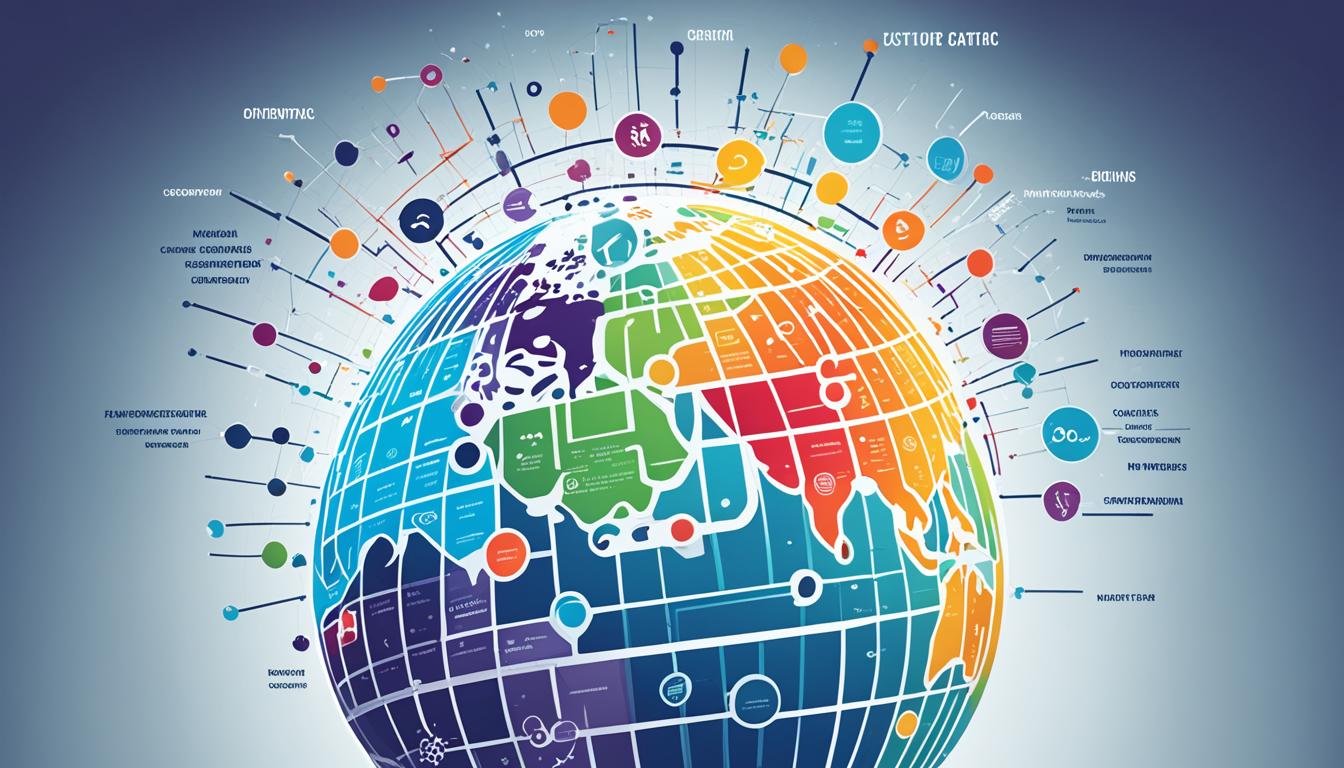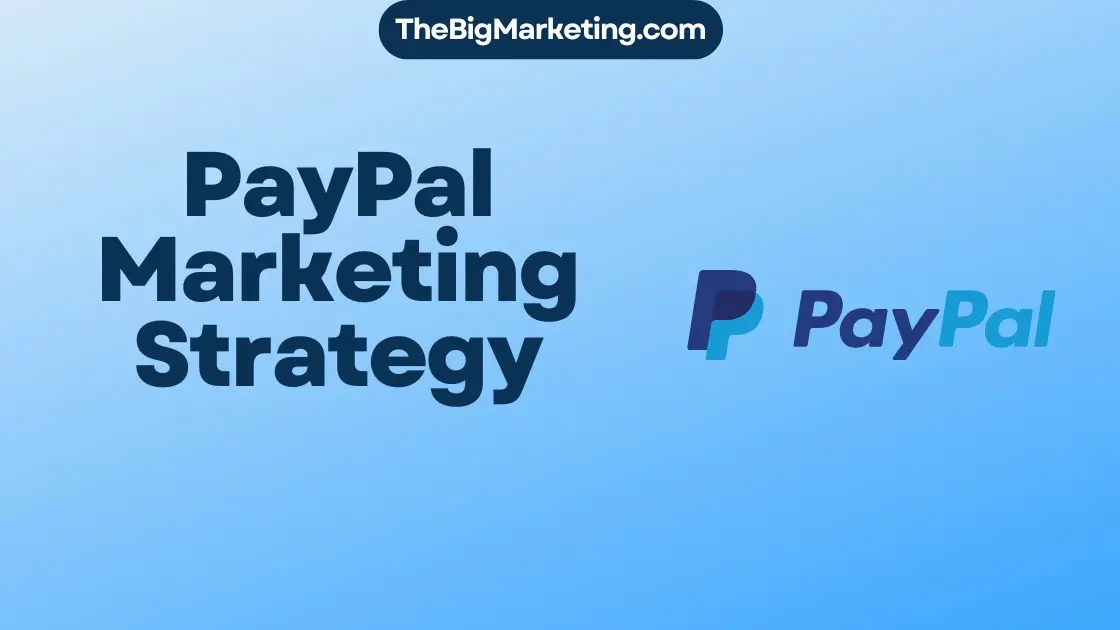In this case study, we will delve into the innovative Kyocera Marketing Strategy for 2024. We will explore the various marketing techniques and promotional tactics employed by Kyocera, including their digital marketing plan, advertising strategies, brand positioning, market analysis, and strategic marketing approach. Additionally, we will analyze the market segmentation and competitive landscape in which Kyocera operates.
Key Takeaways:
- Kyocera employs a comprehensive digital marketing plan to promote their products and services.
- Their advertising strategies effectively position Kyocera as a trusted and reliable brand.
- Through market analysis, Kyocera identifies customer needs and preferences to tailor their marketing efforts.
- Their strategic marketing approach enables Kyocera to stay ahead of competitors and adapt to changing market dynamics.
- Kyocera understands the importance of market segmentation and effectively targets specific customer segments.
Maximizing Color Ink
In Kyocera’s marketing strategy, color ink optimization plays a vital role in maximizing print investment. Kyocera understands the benefits of color ink and the profound impact it has on consumer behaviors and buying decisions. By leveraging the psychology of color, Kyocera strategically incorporates vibrant and engaging color elements in their marketing materials and communications.
By utilizing color ink effectively, Kyocera creates a visual appeal that captures attention, stimulates emotions, and enhances brand recognition. The thoughtful use of colors can evoke specific moods, convey messages, and leave a lasting impression on potential customers. It is well-established that colors have the power to influence perceptions, shape associations, and drive action.
Research shows that color can increase brand recognition by up to 80%. Harnessing the potential of color psychology, Kyocera capitalizes on the positive impact that different colors can have on consumer perceptions. For example:
| Color | Associated Emotions and Meanings |
|---|---|
| Red | Passion, energy, urgency, and excitement. |
| Blue | Trust, reliability, calmness, and professionalism. |
| Green | Growth, harmony, health, and sustainability. |
| Yellow | Optimism, happiness, creativity, and warmth. |
| Orange | Confidence, enthusiasm, friendliness, and creativity. |
| Purple | Royalty, ambition, spirituality, and luxury. |
By strategically employing these colors and more, Kyocera infuses their marketing collateral with a sense of purpose and intention. This deliberate use of color enhances brand recognition, resonates with target audiences, and influences buying decisions. Whether it’s through colorful brochures, vivid advertisements, or eye-catching packaging, Kyocera’s optimized use of color ink adds depth and impact to their marketing campaigns.
Adapting to the Digital Age
In today’s rapidly evolving business landscape, digital transformation has become essential for organizations to stay competitive. Kyocera’s marketing strategy recognizes this need and focuses on adapting to the digital age to meet the changing demands of customers.
One key aspect of Kyocera’s strategy is embracing digital platforms. By leveraging various digital channels, such as social media, websites, and online advertising, Kyocera aims to reach a wider audience and create meaningful engagements. The use of digital platforms allows Kyocera to amplify their brand messaging and connect with customers on a more personal level.
In addition to utilizing digital platforms, Kyocera understands the significance of evolving business models in line with technological advancements. They continuously assess their business processes and identify areas where digital transformation can drive growth and efficiency. This proactive approach enables Kyocera to optimize their operations, enhance customer experiences, and stay ahead of their competitors.
Fostering Engagement and Facilitating SMBs in the Digital Age
Engagement plays a pivotal role in Kyocera’s marketing strategy. They prioritize building meaningful connections with their audience by providing valuable content, personalized experiences, and responsive customer support. By fostering engagement, Kyocera aims to strengthen brand loyalty and drive customer advocacy.
Furthermore, Kyocera recognizes the challenges and opportunities that digitalization presents to small and medium-sized businesses (SMBs). They offer insights and resources to help SMBs navigate the digital landscape and leverage digital technologies effectively. Kyocera understands the importance of empowering SMBs in the digital age and works towards providing them with the necessary tools and knowledge to thrive in a technologically driven business environment.
Embracing Sustainable Business Practices
In addition to adapting to the digital age, Kyocera places a strong emphasis on sustainable business practices. They believe that sustainability is not just a trend, but a crucial element of responsible business operations. Kyocera integrates sustainable practices into their marketing strategy, ensuring that their products and services contribute to a greener and more environmentally friendly future.
By prioritizing sustainability, Kyocera demonstrates their commitment to corporate social responsibility and recognizes the growing importance of environmental consciousness among consumers. Their sustainable business practices align with their marketing efforts, reinforcing their brand image as an environmentally conscious organization.
SMBs in the Digital Age
For small and medium-sized businesses, navigating the digital age can present both challenges and opportunities. Kyocera understands the unique needs and constraints faced by SMBs and provides tailored solutions to help them thrive in the digital era.
By leveraging their expertise and experience, Kyocera offers insights and guidance on digital transformation strategies that are specifically geared towards SMBs. They emphasize the importance of leveraging digital platforms, optimizing business processes, and engaging with the target audience effectively.
Moreover, Kyocera recognizes the role of technology in leveling the playing field for SMBs. They provide support and resources to help SMBs integrate technology into their operations, enhance productivity, and compete with larger players in the market.
Benefits of Kyocera’s Digital Strategy for SMBs
| Benefits | Description |
|---|---|
| Increased Reach | By embracing digital platforms, SMBs can expand their customer base and reach a wider audience. |
| Cost-Effective Marketing | Digital marketing allows SMBs to optimize their marketing efforts and target specific demographics more efficiently. |
| Enhanced Customer Engagement | Through digital platforms, SMBs can build meaningful relationships with their customers and foster loyalty. |
| Streamlined Operations | Digital transformation enables SMBs to automate and optimize their business processes, enhancing efficiency and reducing costs. |
| Competitive Advantage | By embracing digital technologies, SMBs can gain a competitive edge over their traditional counterparts and larger competitors. |
Streamlining Workflows and Enhancing Mobility
In today’s fast-paced business environment, organizations face various workflow problems that can hinder productivity and efficiency. Kyocera recognizes these challenges and has incorporated a comprehensive approach to streamline workflows and enhance mobility through the use of advanced technology.
One key aspect of Kyocera’s marketing strategy is automation. By leveraging automation tools, organizations can eliminate repetitive and manual tasks, allowing employees to focus on more value-added activities. Automation not only saves time but also reduces the risk of human error, ensuring accurate and consistent workflows.
Furthermore, Kyocera embraces enterprise mobility, recognizing the increasing prevalence of remote working arrangements. With the rise of data security concerns in remote working environments, Kyocera places a strong emphasis on ensuring the protection of sensitive information. By implementing robust data security protocols and solutions, businesses can maintain data privacy and minimize the risk of cyber threats.
Remote working has become a vital component of the modern workplace, and Kyocera understands the importance of providing employees with the necessary tools and technologies to work efficiently from anywhere. Through their marketing strategy, Kyocera offers solutions that enable remote workers to access essential documents, collaborate with colleagues, and stay connected while maintaining high productivity levels.
As highlighted by Kyocera, enterprise mobility is more than just remote work. It’s about empowering employees to work seamlessly, regardless of their physical location, by leveraging technology. Kyocera’s enterprise mobility solutions provide organizations with the flexibility to adapt to changing business needs and create a more agile workforce.
To illustrate the effectiveness of Kyocera’s strategy in streamlining workflows and enhancing mobility, consider the following case study:
Case Study: Enhancing Productivity through Workflow Automation
A leading manufacturing company faced operational inefficiencies due to manual workflows and a lack of automation. Kyocera conducted a thorough analysis of their existing processes and identified areas for improvement.
By implementing Kyocera’s workflow automation solutions, the company was able to streamline their order processing, inventory management, and logistics operations. The automated workflows reduced manual errors, enabling the company to deliver products faster and with greater accuracy.
The company also benefited from Kyocera’s enterprise mobility solutions, which allowed their field sales team to access real-time information, collaborate with relevant stakeholders, and provide swift responses to customer inquiries. As a result, the company experienced improved customer satisfaction and increased sales.
This case study demonstrates how Kyocera’s marketing strategy, focusing on workflow automation and enterprise mobility, can drive significant improvements in productivity, efficiency, and customer satisfaction.
Fostering Sustainability and Going Paperless
In line with Kyocera’s comprehensive marketing strategy, the company is committed to fostering sustainability and embracing paperless solutions. By prioritizing environmentally friendly practices, Kyocera aims to reduce its ecological footprint and contribute to a greener future.
One of the key areas where Kyocera focuses on digitalization is the healthcare sector. By embracing digital solutions, healthcare organizations can streamline their processes, improve patient care, and enhance operational efficiencies. Digitalization eliminates the need for excessive paper usage, resulting in a significant reduction in waste and cost savings.
While the world transitions towards a paperless society, Kyocera recognizes that print still plays a vital role. In a paperless world, print materials serve specific purposes, such as legal documents, patient records, and essential business communications. However, it is crucial to strike a balance between print and digital to minimize environmental impact.
As businesses increasingly rely on digital platforms, security threats become a pressing concern. Kyocera addresses these challenges with secure printing solutions that protect sensitive data and ensure confidential information remains secure. By implementing secure printing practices, businesses can mitigate the risk of data breaches and maintain a high level of information security.
Moreover, Kyocera advocates for sustainable business practices across industries. By adopting sustainable strategies, organizations can reduce waste, conserve resources, and contribute to a healthier planet. Sustainable practices not only benefit the environment but also enhance a company’s reputation, attract customers, and build brand loyalty.
| Paperless Solutions | Benefits |
|---|---|
| Digitalization in healthcare | Streamlined processes, improved patient care, cost savings, reduced waste |
| Print in a paperless world | Legal documents, patient records, essential business communications |
| Security threats | Secure printing solutions to protect sensitive data and ensure information security |
| Sustainable business practices | Reduced waste, conservation of resources, enhanced reputation and brand loyalty |
Leveraging Managed Print Services
Kyocera’s marketing strategy includes leveraging managed print services to improve efficiency and cost optimization. By incorporating managed print services into their business operations, organizations can benefit from increased uptime and reduced maintenance costs. Kyocera understands the importance of streamlining print-related workflows to enhance productivity and minimize unnecessary expenses.
Managed print services offer businesses the opportunity to optimize their printing resources and implement proactive measures for maintaining printer uptime. With remote device monitoring capabilities, Kyocera’s managed print services enable businesses to monitor and manage their print devices from a centralized location. This remote device monitoring system enhances customer support, streamlines operations, and ensures timely maintenance and supply replenishment.
One of the notable advantages of leveraging Kyocera’s managed print services is the utilization of inkjet printing technology. Inkjet printing provides businesses with high-quality output, lower printing costs, and faster printing speeds, resulting in improved efficiency. Additionally, inkjet printing contributes to Kyocera’s eco-credentials, as it reduces energy consumption and minimizes waste, aligning with sustainable business practices.
The Benefits of Kyocera’s Managed Print Services:
- Efficiency optimization through streamlined workflows
- Cost optimization with reduced maintenance expenses
- Increased uptime and improved productivity
- Remote device monitoring for enhanced customer support
- Inkjet printing advantages: high-quality output, lower printing costs, and faster printing speeds
- Eco-credentials through energy efficiency and waste reduction
By leveraging Kyocera’s managed print services, businesses can streamline their printing processes, optimize costs, and improve overall efficiency. With a focus on productivity, customer support, and sustainability, Kyocera’s comprehensive managed print services offer organizations a strategic advantage in the competitive landscape.
The Importance of Content Management
In today’s digital world, effective content management is crucial for businesses to remain competitive and meet the evolving needs of their customers. Kyocera recognizes the significance of content management in their marketing strategy, leveraging it to optimize their operations and drive success. By integrating cloud technology and open-source cloud solutions, Kyocera empowers businesses with efficient and scalable content management systems.
Cloud technology plays a pivotal role in content management, providing organizations with the flexibility and accessibility they need to navigate the digital landscape. Leveraging cloud-based solutions allows businesses to store, organize, and share their content securely, eliminating the need for on-premises infrastructure. Kyocera’s commitment to cloud technology enables businesses to streamline their content management processes and leverage the benefits of scalability and cost-efficiency.
In addition to cloud technology, Kyocera recognizes the significance of education in the cloud. With the shift towards hybrid workplaces and remote learning, cloud-based educational platforms have become increasingly essential. By integrating education in the cloud into their marketing strategy, Kyocera supports the seamless dissemination of knowledge and resources, facilitating continuous learning and growth.
Optimizing IT infrastructure is another key aspect of Kyocera’s content management approach. They understand that a robust and efficient IT infrastructure is vital for seamless content management. By offering cutting-edge IT solutions and services, Kyocera helps businesses optimize their infrastructure, ensuring smooth workflows and enhanced productivity.
Data security is a critical consideration in content management, and Kyocera prioritizes it in their marketing strategy. They understand the importance of safeguarding sensitive information and mitigating the risks associated with data breaches. By implementing robust security measures and offering secure data management solutions, Kyocera provides businesses with peace of mind and ensures data confidentiality.
Furthermore, Kyocera recognizes that effective content management directly impacts productivity. By streamlining content creation, distribution, and collaboration processes, businesses can enhance their productivity levels and drive efficiency. Kyocera’s content management strategy focuses on facilitating seamless workflows, enabling team collaboration, and boosting overall business performance.
With a comprehensive understanding of the importance of content management, Kyocera’s marketing strategy encompasses cloud technology, open-source cloud solutions, education in the cloud, optimized IT infrastructure, data security, and productivity enhancement. By integrating these elements, Kyocera empowers businesses to effectively manage their content, stay competitive, and achieve long-term success.
| Key Aspects of Kyocera’s Content Management Strategy: |
|---|
| Integration of cloud technology and open-source cloud solutions |
| Facilitation of education in the cloud |
| Optimization of IT infrastructure for seamless content management |
| Implementation of robust data security measures |
| Focus on productivity enhancement through streamlined workflows |
Driving Business Transformation with Technology
As part of its Kyocera Marketing Strategy, Kyocera focuses on harnessing the power of technology to drive business transformation. Embracing digital transformation, Kyocera explores various aspects such as AI automation, process optimization, and business intelligence.
In the era of remote working and the rise of the hybrid workforce, Kyocera provides insights on enabling remote work seamlessly while ensuring data security. They understand the critical need for businesses to adapt to the new working environment and maintain productivity.
To ensure workplace resilience, Kyocera emphasizes leveraging technology to enhance efficiency and agility. By implementing intelligent automation, organizations can streamline processes and improve operational workflows. This not only frees up valuable time for employees but also enables them to focus on high-value tasks that drive innovation and growth.
Through the strategic use of technology, Kyocera empowers businesses to make data-driven decisions. With advanced business intelligence tools, companies can gain valuable insights into their operations, market trends, and customer behaviors. This enables them to stay competitive in a rapidly evolving business landscape.
By driving business transformation through technology, Kyocera equips organizations with the tools and capabilities to thrive in a digital age. They understand that embracing technological advancements and leveraging digital strategies is vital in shaping a successful future.
The Benefits of Driving Business Transformation:
- Increased efficiency and productivity
- Enhanced decision-making through data insights
- Streamlined workflows and improved operational agility
- Seamless remote working and support for hybrid workforce
- Enhanced data security and protection from cyber threats
- Business resilience and adaptability in the face of uncertainties
Conclusion
In conclusion, Kyocera’s marketing strategy for 2024 encompasses various elements that are crucial for success in today’s competitive landscape. By maximizing the use of color ink, Kyocera aims to captivate their audience and make a lasting impression. Adapting to the digital age is another key aspect of their strategy, as they recognize the need to embrace digital platforms and transform their business models.
Streamlining workflows and enhancing mobility through automation and technology is another priority for Kyocera. By doing so, they enable organizations to operate more efficiently and maintain productivity in remote working environments. Embracing sustainability is also a significant aspect of Kyocera’s strategy, as they advocate for paperless solutions, secure printing practices, and eco-credentials in inkjet printing.
Leveraging managed print services, prioritizing content management, and driving business transformation through technology are additional pillars of Kyocera’s strategy. By ensuring workplace resilience and prioritizing data security, Kyocera aims to meet the evolving needs of their customers and enhance their market presence. Through these strategies and techniques, Kyocera is poised to thrive in the ever-evolving digital landscape.






